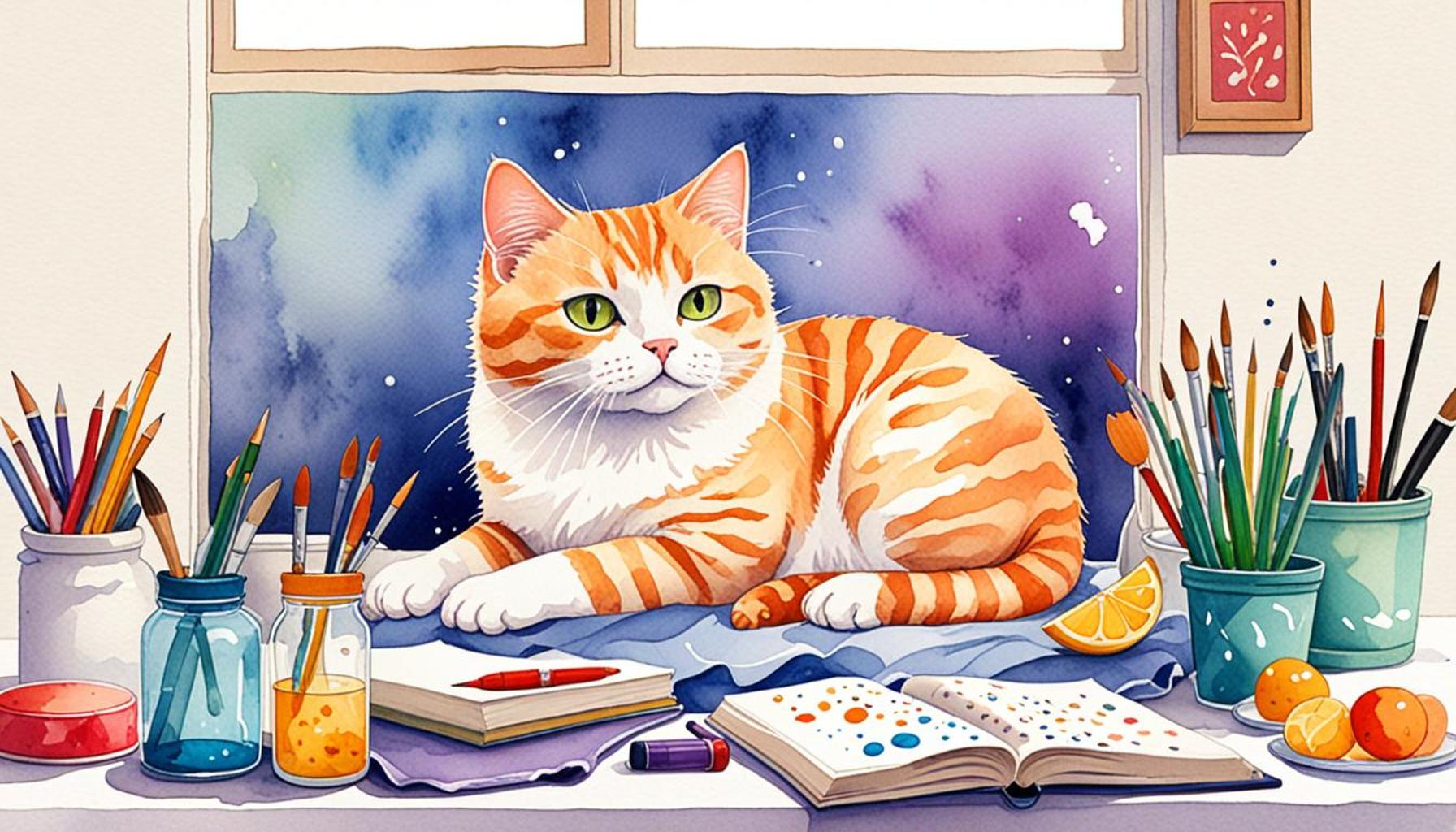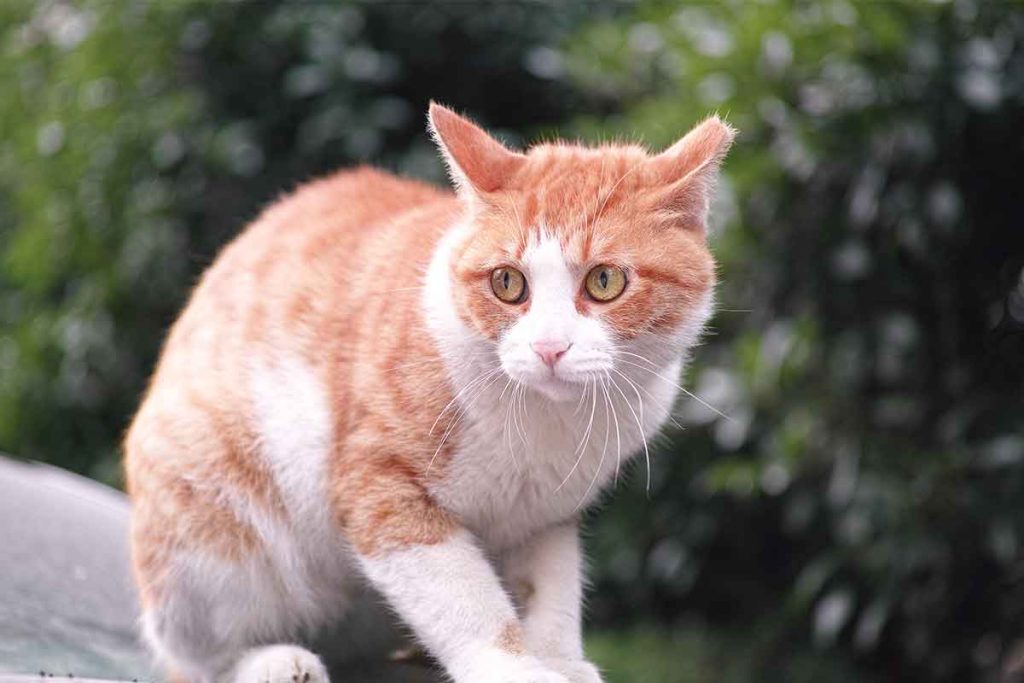Strategies to Help Cats Overcome Anxiety and Stress in Domestic Environments

Understanding Feline Anxiety
In today’s fast-paced world, our beloved cats can experience significant anxiety and stress in their domestic environments. It’s essential for cat owners to recognize these signs and implement effective strategies. A calm and fulfilling home will improve not only your cat’s well-being but also strengthen your bond. With approximately 30% of cats experiencing some form of anxiety, understanding this important aspect can lead to a happier life for both you and your feline companion.
Common Signs of Stress in Cats
First, it’s important to identify the symptoms of anxiety. Watch for:
- Hiding or avoidance behaviors: If your cat is suddenly seeking shelter in tight spaces, or avoiding interactions with family members, this could be their way of coping with stress.
- Excessive grooming leading to skin issues: Cats may lick their fur excessively when anxious, which can result in bald patches or skin infections. This behavior often serves as a self-soothing mechanism.
- Increased vocalization or aggression: If your normally quiet cat begins to meow excessively or shows unexpected aggression, such as biting or scratching, they may be trying to communicate their discomfort.
Recognizing these signs is the first step toward helping your feline friend regain a sense of security. Acknowledging these behaviors early on can prevent escalating issues and promote a healthier environment for your cat.
Potential Triggers for Stress
Several factors can contribute to a cat’s anxiety, including:
- Changes in the household, such as moving or new family members: Relocating or welcoming a new pet or person can disrupt a cat’s sense of territory, leading to confusion and anxiety.
- Environmental noises, like loud machinery or fireworks: Sudden, loud sounds can easily startle a cat, making them feel vulnerable and scared, particularly during events like Independence Day or New Year’s Eve.
- Insufficient mental and physical stimulation: Indoor cats often lack exercise and engagement, which can lead to boredom and increased anxiety. Regular playtime with toys or engaging in puzzle feeders can alleviate this issue.
By understanding these triggers, you can create an environment that minimizes stress and promotes relaxation for your cat, ensuring their happiness and overall health.

Key Strategies for Relief
Implementing appropriate strategies can make a world of difference in alleviating feline anxiety. Simple adjustments to your cat’s environment, routine, or social interactions might significantly reduce their anxiety.
Consider establishing a safe space for your cat, where they can retreat to when feeling overwhelmed. This could be a quiet room with comfortable bedding, their favorite toys, and access to climbing structures. Routine is also vital; maintaining consistent feeding and playtime schedules can provide your cat with a sense of stability.
Moreover, investing in interactive toys or engaging in regular play sessions can help alleviate boredom and stimulate your cat’s mind and body. Employing calming products, such as pheromone diffusers or anxiety wraps, can also provide additional comfort.
In the following sections, we will explore effective methods to help your feline regain peace and tranquility in their home, ensuring a nurturing environment where they can thrive.
DISCOVER MORE: Click here for essential pet adoption resources
Creating a Calming Environment
One of the first steps in helping your cat manage anxiety is to create a calming environment. Cats are naturally territorial animals, and they thrive in spaces that offer them a sense of security and comfort. A well-structured environment can significantly reduce their feelings of stress and anxiety. Begin by identifying areas in your home that might be causing discomfort or fear, such as loud appliances or high-traffic zones.
Establishing Safe Spaces
Providing your cat with a designated safe space is crucial. This can be a quiet room or a cozy corner equipped with their favorite items. Consider the following elements when creating this sanctuary:
- Comfortable bedding: Use soft blankets, cushions, or a cat bed to encourage your cat to relax and unwind.
- Vertical spaces: Cats love to perch on high surfaces. Installing cat trees or wall shelves can give them a sense of control and territory.
- Hidden spots: Ensuring that your cat has access to spots where they can hide, such as cardboard boxes or tunnels, can foster a sense of safety during stressful times.
By offering a well-defined safe space, your cat can retreat whenever they feel anxious or overwhelmed. This not only aids in managing their stress levels but also enhances their overall sense of security within your home.
Maintaining Consistent Routines
The significance of consistent routines cannot be overstated when it comes to easing feline anxiety. Just like humans, cats thrive on predictability. Establishing regular feeding and play schedules aids in providing a sense of structure for your cat, reinforcing their feeling of control over their environment. For instance, try to feed your cat at the same time each day, and dedicate time each day for interactive play sessions.
Moreover, reducing the frequency of unexpected changes in your household can also mitigate anxiety. If you need to make significant changes, such as moving furniture or introducing a new pet, take your time and allow your cat to acclimate slowly rather than overwhelming them with abrupt alterations.
Interactive Play: A Vital Component
Engaging your cat in interactive play is another essential strategy to help soothe anxiety and stress. Playtime is not only a great way to bond with your cat, but it also provides mental and physical stimulation that combats boredom. Incorporate toys that mimic the movement of prey, such as feather wands or laser pointers, to entice your cat’s natural hunting instincts.
Studies suggest that regular playtime can reduce levels of stress hormones in cats, decreasing the likelihood of anxiety-related behaviors. Aim to dedicate a minimum of 15-20 minutes each day for interactive play sessions, allowing your cat to expend energy and engage their mind.
In summary, creating a calming environment, maintaining consistent routines, and providing ample opportunities for play are fundamental strategies for relieving feline anxiety and stress. These approaches will not only improve your cat’s quality of life but also foster a stronger bond between you and your furry companion.
In domestic environments, many cats experience anxiety and stress due to various factors, from changes in their routine to environmental stimuli. Understanding and addressing these issues is crucial for creating a serene home for our feline friends. Below are some effective strategies to help alleviate anxiety and stress in cats.
Identifying Triggers
The first step in helping your cat is to identify specific triggers that cause stress. Common triggers include loud noises, unfamiliar people, or even changes in the household dynamic. Observing your cat’s behavior can provide clues. For instance, if your cat hides during thunderstorms, this is a clear sign that such events induce anxiety. Keeping a journal can help track these patterns and develop a tailored approach to mitigate them.
Creating a Safe Space
Another effective strategy is to create a safe space for your cat. This could be a designated room or a cozy corner filled with familiar items like their bed, toys, and scent markers. Cats often feel more secure in smaller, enclosed spaces where they can retreat when feeling overwhelmed. Additionally, consider utilizing calming products such as pheromone diffusers or sprays that can help create a relaxing environment.
Engaging Activities
Engaging your cat in play is paramount. Stress relief can come from interactive play with toys that stimulate your cat’s hunting instincts. Providing scratching posts and climbing structures can also promote physical activity, which is essential for their mental health. Regular play sessions can not only reduce anxiety but also strengthen the bond between you and your cat.
Routine and Stability
Cats thrive on routine. Maintaining a consistent schedule for feeding, playtime, and even litter box cleaning can provide a sense of stability. Sudden changes should be introduced gradually. If you have to move homes or bring a new pet into the household, proceed with caution and patience. Ensuring your cat feels secure during these transitions is vital.
Consulting a Veterinarian
Sometimes, underlying medical issues may exacerbate anxiety. If your cat’s stress symptoms persist despite implementing various strategies, consulting a veterinarian is advisable. They can assess for any medical conditions and may recommend behavioral therapy or medication to support your cat’s mental well-being.
Each of these strategies plays a crucial role in helping cats overcome anxiety and stress within domestic settings. By fostering an environment of security and stability, we can significantly enhance our feline companions’ quality of life. Exploring these methods can lead to a happier, healthier, and more relaxed cat.
| Category | Description |
|---|---|
| Safe Spaces | Designate a cozy area where your cat can retreat to feel secure. |
| Routine Stability | Maintaining consistent feeding and activity schedules to ease anxiety. |
DISCOVER MORE: Click here to learn about the impact of balanced diets on your pet’s health
Utilizing Calming Products
In addition to creating a serene atmosphere and incorporating interactive play, utilizing calming products can be a game changer in managing feline anxiety. Various products designed specifically for cats are available on the market, and many of these have shown to be highly effective in promoting relaxation.
Cat Pheromones
One popular option is the use of cat pheromones. These are synthetic copies of natural pheromones that cats produce to communicate comfort and safety. Available as sprays, diffusers, or collars, pheromones can significantly reduce anxiety in stressful situations, such as vet visits or moving to a new home. Studies have indicated that pheromone diffusers can reduce signs of stress in cats, providing a sense of calm in their surroundings.
Natural Supplements
Natural supplements, including herbal remedies such as valerian root and chamomile, can also contribute to easing anxiety. Additionally, calming treats with ingredients designed to soothe can be integrated into your cat’s diet. Always consult your veterinarian before introducing any new products or supplements, as this ensures you’re choosing the right options for your cat’s health and needs.
Sound Therapy
Another innovative approach is the use of sound therapy. Certain types of music or auditory stimulation can have a calming effect on cats. Research suggests that soft, classical music can be highly beneficial, as it can lower stress levels and lead to peaceful behaviors. Consider playing gentle tunes while you are away from home, creating a peaceful atmosphere that may ease any anxiety your cat experiences in your absence.
Regular Veterinary Check-ups
Ensuring your cat’s overall health can also alleviate anxiety. Regular veterinary check-ups are essential because underlying health issues can contribute to stress and anxiety in pets. If your cat is acting anxious or fearful, it is crucial to rule out any medical conditions. Additionally, your vet may recommend behavioral therapy as a proactive way to address and mitigate anxiety in your feline companion.
Behavioral Training and Enrichment
Lastly, focusing on behavioral training and enrichment activities can pave the way for a more relaxed and contented home life for your cat. Engaging in gentle behavioral training using positive reinforcement techniques can help your cat develop confidence. This can be as simple as teaching them where to scratch or how to use a designated litter box.
Enrichment activities beyond interactive play are also valuable in reducing anxiety. Puzzle toys, treat-dispensing balls, or even hiding food around the house encourages exploration and stimulates your cat mentally, acting as an outlet for anxiety. Consider creating a scavenger hunt with treats or catnip in different locations around your home, engaging their natural curiosity and keeping their minds active.
By integrating calming products, sound therapy, regular vet visits, and enriching activities into your cat’s routine, you’ll be better equipped to help your feline friend manage anxiety and stress effectively in their domestic environment. Each step taken contributes significantly to enhancing their quality of life.
DISCOVER: Click here for top pet adoption resources
Conclusion
In summary, addressing feline anxiety and stress within domestic environments requires a multifaceted approach that prioritizes your cat’s well-being and comfort. By employing effective strategies, such as providing a serene home environment, utilizing calming products, and integrating behavioral training and enrichment activities, you can significantly reduce anxiety in your feline friend. Understanding that cats are sensitive creatures, it is essential to be mindful of their needs and adopt strategies that work best for them.
Regular vet check-ups play a crucial role in ruling out any underlying health issues that may exacerbate anxiety. Furthermore, incorporating sound therapy and natural supplements allows for additional layers of comfort that cater to your cat’s innate instincts and needs. Always remember, each cat is unique, and what works for one may not be as effective for another. Observing your cat’s behavior and seeking professional advice when necessary will ensure you provide the best possible care.
Ultimately, nurturing a calming atmosphere and remaining attentive to your cat’s emotional and physical requirements is paramount. Through patience and dedication, you can create a supportive environment that helps your cat navigate their anxiety, leading to a happier, healthier, and more confident feline companion. Don’t hesitate to explore new techniques and resources available for managing feline anxiety and discover how small changes can lead to significant improvements in your cat’s quality of life.


